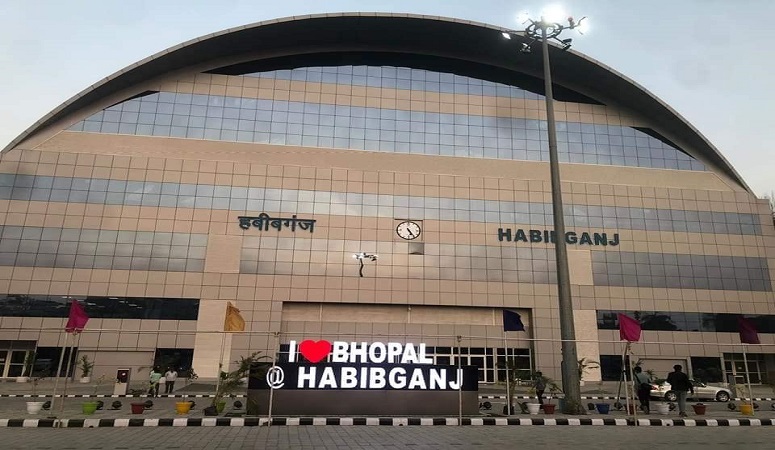
Habibganj to Rani Kamlapati: Logic, politics behind a name change
Bhopal joins a long list of cities whose railway stations have been renamed in recent years by the NDA government

Bhopal’s Habibganj joins India’s growing list of railway stations — apart from cities — that have been rechristened by the current dispensation. Ahead of Prime Minister Narendra Modi inaugurating the railway station in Bhopal on Monday after its revamp, Habibganj was renamed ‘Rani Kamlapati’ after the tribal queen of the Gond community.
The station has been redeveloped — supposedly bringing it to world standards — with private sector participation (PPP model) at a cost of about ₹450 crore. The name change, proposed by the BJP government in Madhya Pradesh last week, was cleared in speed by the Centre.
Some of the recent name changes effected by the NDA government include the Mughalsarai Junction in Uttar Pradesh, which is now Pt. Deen Dayal Upadhyaya Junction. Faizabad railway station is now Ayodhya Cantt. The Manduadih station in Varanasi was renamed Benaras. Further, there is a proposal to rename Jhansi railway station as ‘Veerangana Lakshmibai Railway Station’.
In Tamil Nadu, where the BJP has been working hard to gain a foothold, Chennai Central was renamed Puratchi Thalaivar Dr MG Ramachandran Central Railway Station in 2019, just ahead of the general election.
What Queen Kamlapati achieved
According to a statement from the Madhya Pradesh government, Rani Kamlapati was the widow of Nizam Shah of the Gond dynasty of the 18th century, which ruled Ginnorgarh, around 55 km from Bhopal. Nizam Shah is credited with building the seven-storeyed Kamlapati Palace in Bhopal.
Also read: Parallels between Surya’s ‘Jai Bhim’ and Nihalani’s arthouse film ‘Aakrosh’
Once he was killed and Kamlapati took over the reins of the kingdom, she showed great bravery against her rivals, said Chief Minister Shivraj Singh Chouhan. She was the ‘last Hindu queen of Bhopal’, he said, adding that she’d done commendable work in terms of setting up parks and temples, and water management.
Her kingdom was usurped by deceit, through a conspiracy, by Afghan commander Dost Mohammed, he added. “When she saw that victory was not possible, she committed jal jauhar (mass suicide by drowning) to save her respect,” said the CM.
The Gonds, India’s largest tribal community, have a presence Madhya Pradesh, apart from Maharashtra, Chhattisgarh, Andhra Pradesh, Telangana, Bihar and Odisha.
The revamped railway station’s inauguration was scheduled for November 15 to coincide with the birth anniversary of Birsa Munda, a 19th century tribal freedom fighter.
Relative merits
The decision to rename the Bhopal station triggered a heated debate over the contributions of Habibganj, vis-à-vis those of Rani Kamlapati.
Opposition leaders and others who opposed to the name change pointed out that the railway station was located in village named after Habibullah, the grandson of Nawab Sultan Jehan Begum. While he had not really done much for Bhopal, neither had the Rani, said the detractors.
The Gonds themselves are none too happy. Their objection is to the government’s insistence on calling Kamlapati the “last Hindu queen”. While she was indeed the last queen of the community, the Gonds are not Hindus according to the Constitution, they pointed out.


